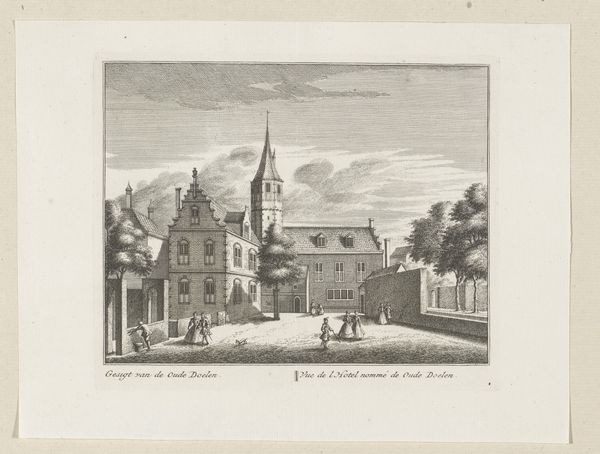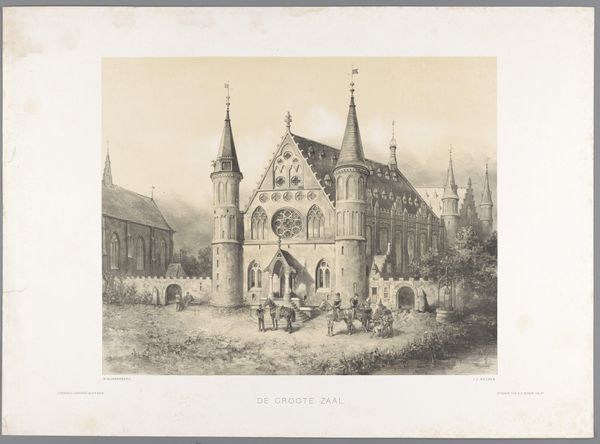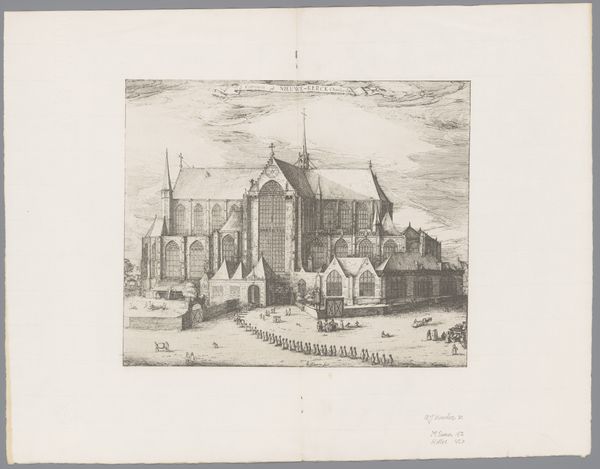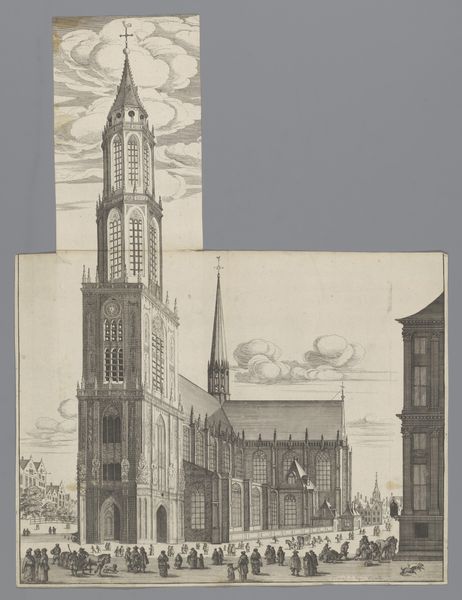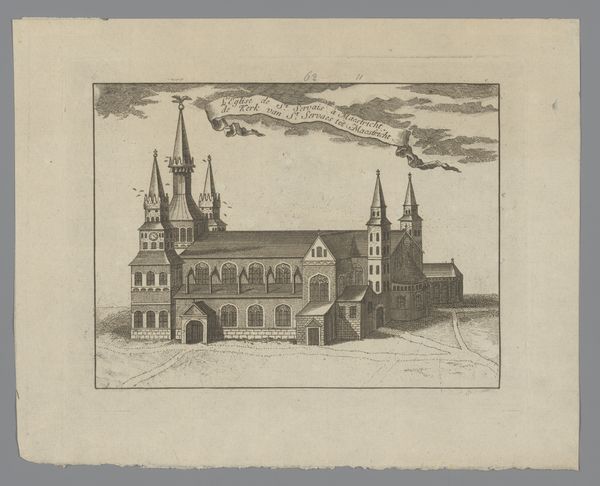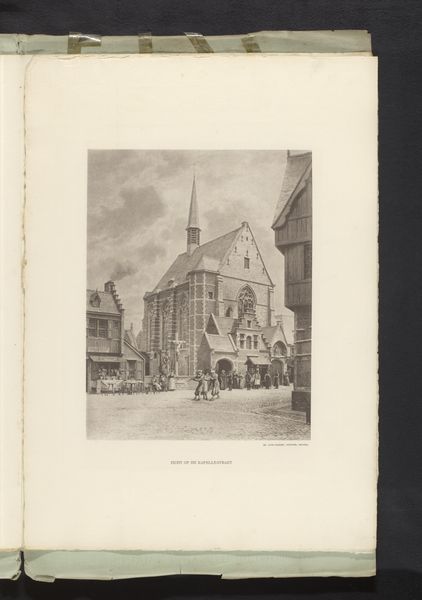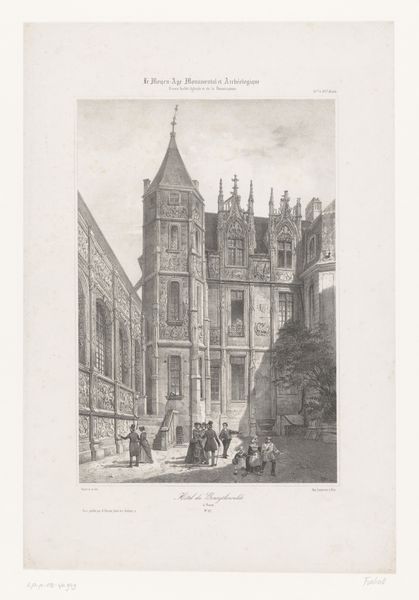
drawing, print, etching, engraving, architecture
#
drawing
# print
#
etching
#
landscape
#
etching
#
engraving
#
architecture
Dimensions: 133 mm (height) x 97 mm (width) (plademaal)
Editor: So, this is H.J. Hammer’s "Roskilde domkirke," created between 1815 and 1882. It's an etching and engraving, giving it this incredible, almost stark quality. It feels very… formal and a bit imposing, don't you think? What strikes you when you look at this print? Curator: The formality, as you say, speaks volumes. Look at the cathedral positioned centrally, almost like a monument frozen in time. But let's consider what a cathedral represents – not just a religious space, but a symbol of power, community, and cultural identity, particularly during the 19th century when national identities were being solidified. Does this depiction challenge or reinforce those power structures, do you think? Notice how people are on the lower right. Are they anonymous or rendered to create a certain type? Editor: I see what you mean. They seem… quite small and a bit anonymous actually, compared to the massive scale of the church. Does the church overshadowing them tell a story about societal hierarchy at the time? Curator: Exactly. Consider the social and political landscape of Denmark during that period. What role did the church play in shaping societal norms, gender roles, and even political discourse? This etching could be read as a commentary on the enduring influence of religious institutions. It might reinforce their symbolic value and the community they seek to unify. Now, does Hammer’s technique add to or detract from the social critique? The precise lines feel very controlled… Editor: Yes, that control almost makes it seem… idealized. So maybe it is a little less critical and more celebratory of the church’s endurance and importance? It makes me consider how art is rarely ever truly neutral; everything has a point of view. Curator: Precisely. And reflecting on art like this urges us to question how images shape our understanding of history and identity even today. Editor: I agree; thank you for providing this context.
Comments
No comments
Be the first to comment and join the conversation on the ultimate creative platform.
